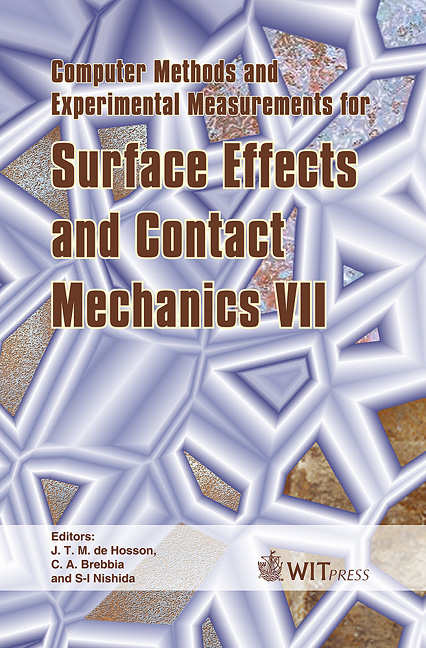Three-dimensional Rolling Contact Stress Analysis
Price
Free (open access)
Transaction
Volume
49
Pages
10
Published
2005
Size
380 kb
Paper DOI
10.2495/SECM050271
Copyright
WIT Press
Author(s)
C. H. Liu & W.-E. Hsu
Abstract
The three-dimensional rolling contact problem is studied in this paper. A previously developed numerical technique, which works only for cases with small spinning motion, is improved in this study so that the tangential stresses can always be determined. Two new initial guesses are proposed for the Newton-Raphson method. The first initial guess is obtained by neglecting strain components. The second initial guess is based upon the conjecture that tractions in pure spin may be approximated by friction stresses during a rigid body rotation about a fixed point called the spin pole; and this conjecture is verified by the numerical results. For any combination of creepages and spins, the two guesses together may provide convergent solutions in the whole range of spin. Keywords: rolling contact, stress analysis, rail and wheel contact. 1 Introduction The following three approaches to three-dimensional rolling contact problems are found in the literature: the direct method that is based upon an integral formulation [1−5], the indirect method which makes use of a variational principle [6−7], and a combination of the above two methods [8−10]. Among the various studies using the direct method, Liu and Paul’s numerical technique [4] can solve for tangential stresses in a non-Hertzian contact region with an arbitrary pressure distribution. The technique was efficient and accurate, but failed to converge in cases with even moderate values of spin. Instead of studying further to obtain convergent solutions, they obtained tangential stresses in cases of impending gross sliding [11]. In this study the authors dealt with the convergence problem in Liu and Paul’s numerical technique [4]. In cases with
Keywords
rolling contact, stress analysis, rail and wheel contact.





